GIKEN LTD (Head Office: Kochi City, Kochi; President: Shinnosuke Moribe; hereafter “GIKEN”) has adopted steel sheet piles as the main structural materials for construction of the “Sozokan” (The Museum of Piling Machines) and “Research Building” within its RED HILL 1967*1 facility, a center for expanding awareness of press-in technologies that the company is developing in Akaoka-Cho, Konan City, Kochi Prefecture. These are the world’s first*2 building structures using this construction method.
The Sozokan was built using confined ground seismic dampers*3 to create a steel spread foundation installed on soft ground. The Research Building was built using pressed-in steel sheet piles, rather than constructing separate pile foundations, pillars, and walls, to create a continuous wall that integrates all the functionality of the separate constructions. Although neither building employs materials or structures specified in the Building Standards Act, they have been scientifically demonstrated to be safe and were built with the authorization of the Minister of Land, Infrastructure, Transport and Tourism. RED HILL 1967, including these new buildings, is scheduled to open to the public from May 2023.
As a proponent of the construction revolution, the mission of GIKEN is to break down preconceived mindsets and a reliance on precedents in the construction industry. With sustainability considerations essential for realizing this vision of construction, GIKEN has designed these two new buildings as Functional Structure™*4. It aims to expand the press-in market and grow the GIKEN Group overall by driving technology propositions for brand new structures and through mechanisms such as the Japanese government’s National Resilience Policy.
*1 A facility created to enable visitors to understand the advantages of the press-in principle by seeing actual GIKEN machines, construction methods, and structures. See previous news release for more information: GKN21NW017JA.
*2 According to GIKEN research.
*3 A unique GIKEN earthquake resistance technology that reduces the degree of earthquake-induced liquefaction, and the lateral slippage of any liquefaction, by pressing-in steel sheet piles to enclose a building’s foundation.
*4 Function-oriented structures that enable flexibility in terms of purpose, construction location, and function as times and society changes. These structures are designed for easy removal and changes in function, with removed materials able to be reused in new structures.
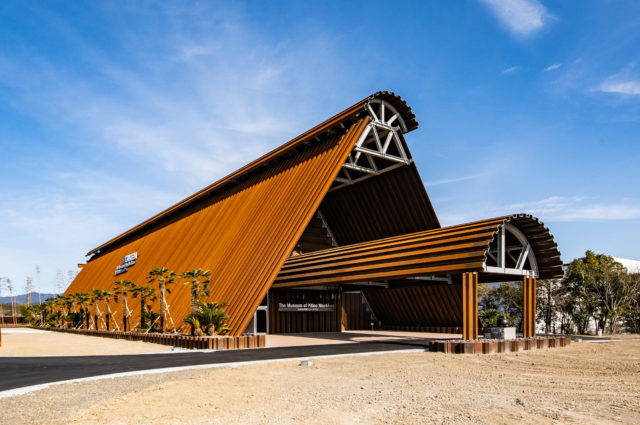
Sozokan (The Museum of Piling Machines)
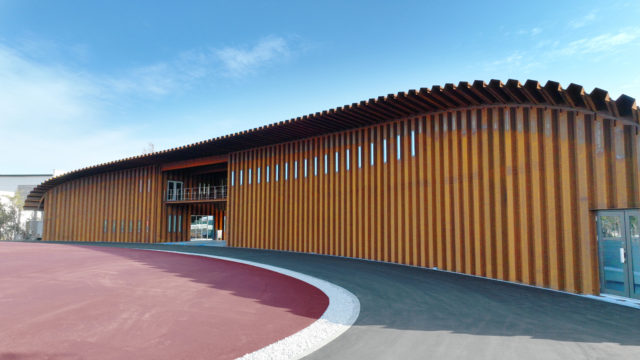
Research Building
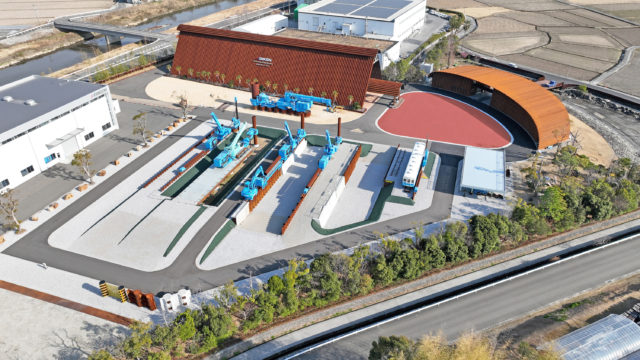
Bird’s eye view of RED HILL 1967
■ Advantages of steel structures
—Excellent resistance to failure
Concrete is a material used frequently in construction, but when excessive forces are applied, cracks develop and it fails suddenly with little deformation. The steel material used in steel sheet piles, on the other hand, can deform considerably when forces are applied to provide excellent resistance to failure.
Structures that use steel-reinforced concrete to increase rigidity (and resist deformation) in the event of major seismic movements require larger pillars, walls and other members to absorb the forces, which is not rational in terms of land use. GIKEN has focused on the flexibility that steel sheet piles exhibit in utilizing them as the main structural materials in these buildings.
—Unique “uchiwa structure”
Integrated combination and use of ductile steel sheet piles as the main structural materials of a building enables the overall structure to flexibly deform in the event of seismic movements. This results in reduced load on individual members, which can help avoid damage. Because this structure disperses forces and bends like the frame of a Japanese “uchiwa” fan, GIKEN has named this technology an “uchiwa structure.” This construction method has been utilized in the construction of both the Sozokan and the Research Building.
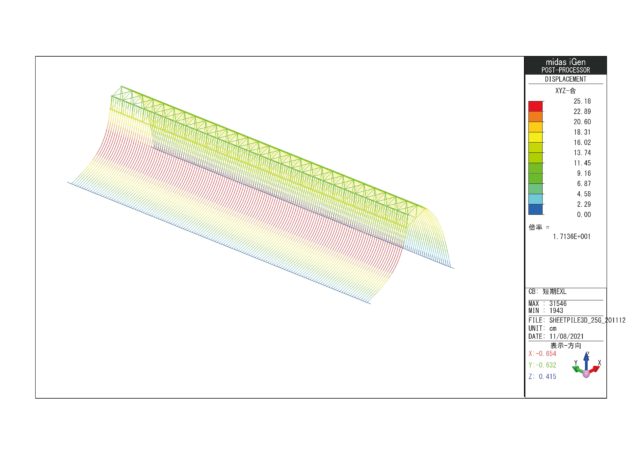
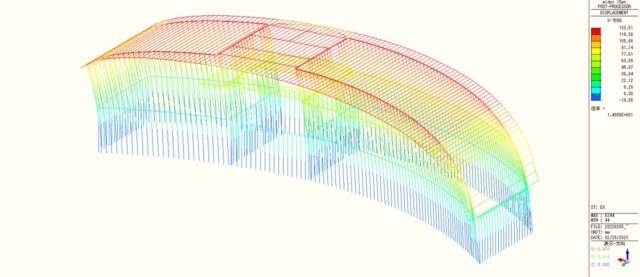
3D modeling-based analysis shows resistance to large earthquakes within elastic limits* without destruction or damage
* The range of elasticity that enables a structure to return to normal (without deformation or distortion) when a load is removed.
■Sozokan (The Museum of Piling Machines)
—World’s first-of-its-kind building structure
The Sozokan is the first structure of its kind in the world, employing steel sheet piles as the main structural materials and using confined ground seismic dampers to create a steel spread foundation over soft ground. The soft ground has been enclosed by the piles to reduce ground subsidence in the event of an earthquake. The steel sheet piles, used to create the steel spread foundation and cofferdam, are also connected with tie rods to enable installation of the spread foundation over soft ground.
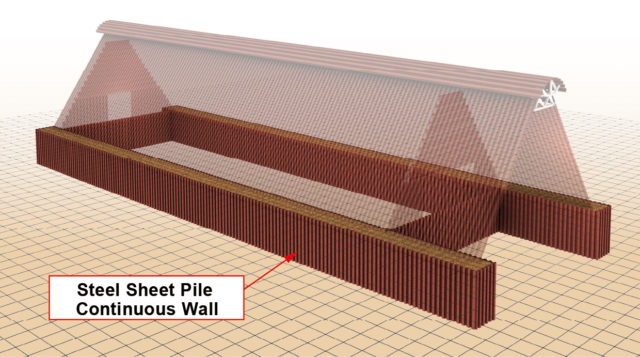
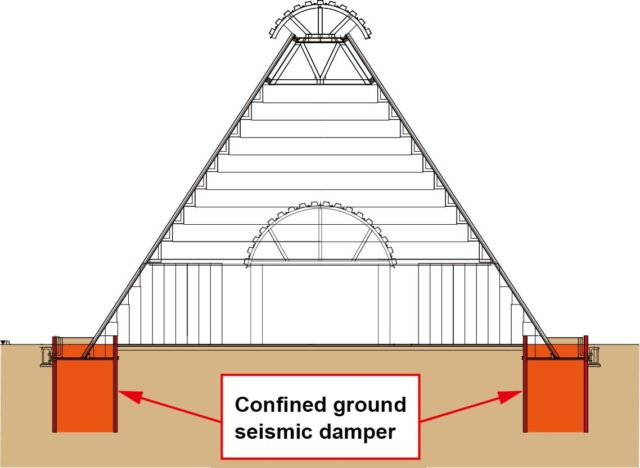
Construction procedures
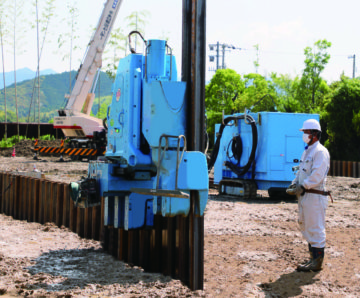
1. Press-in of steel sheet piles
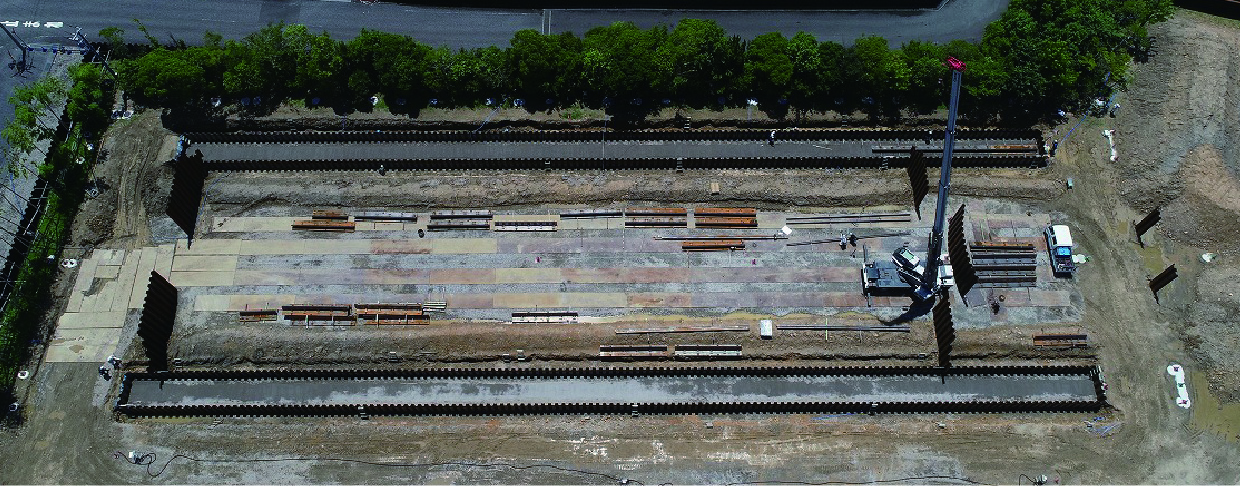
2. Upon completion of press-in work
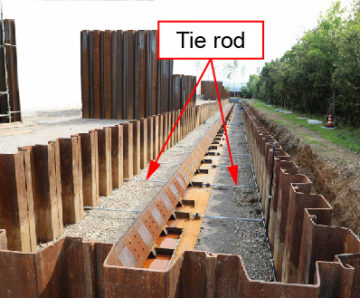
3. Installation of column bases (steel foundations)

4. Press-in of sheet piles for sloped walls on both sides
Overview of Construction
| Building Area | 2423㎡(2.77 m wide, 95.1 m long and 18.0 m high) |
| Certified by the minister of MLITT | Cert. No. MNNNNNN-11850-1 |
| The number of steel sheet piles used | |
| ・For sloped wall (Zero sheet piles) | 20 m × 280 sheets |
| ・For foundation section (Zero sheet piles) | 6 m × 596 sheets |
| ・For roof, gable wall, etc. (Zero sheet piles, Hat sheet piles) | 281 sheets |
| ・Gross weight | 997 t |
■Research Building
—World’s first-of-its-kind building structure
The Research Building is also the first structure of its kind in the world, built using pressed-in steel sheet piles to create a continuous wall that integrates all the functionality of pile foundations, pillars, and walls. A confined ground seismic damper structure is created by enclosing the ground by walls. As another world’s first trial, a 2-meter diameter tubular pile has been used directly as the elevator shaft through which the elevator moves.
Despite using the same steel sheet piles as used in the Sozokan, the Research Building is a curved structure with a completely different design.
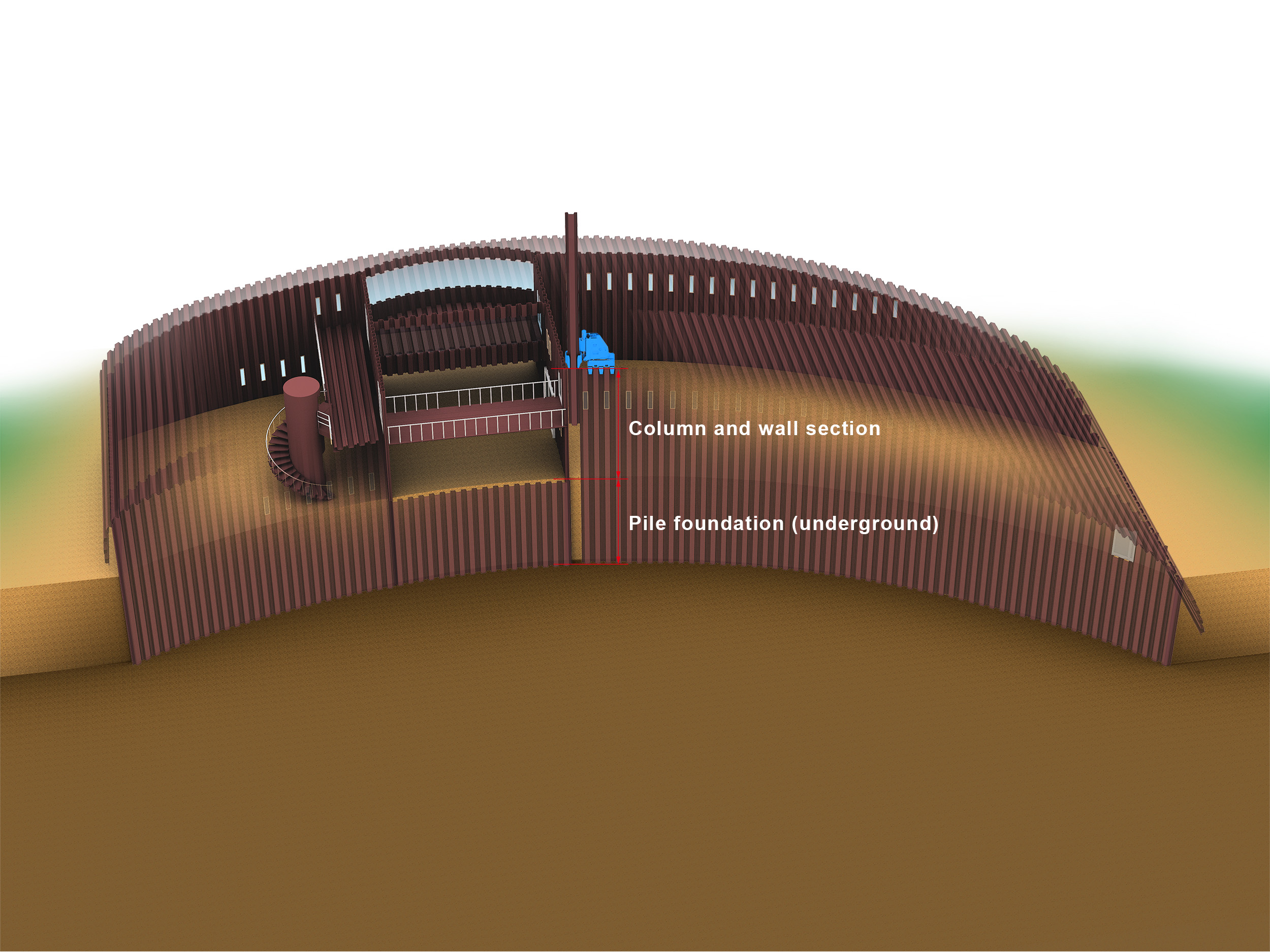
Construction Procedures
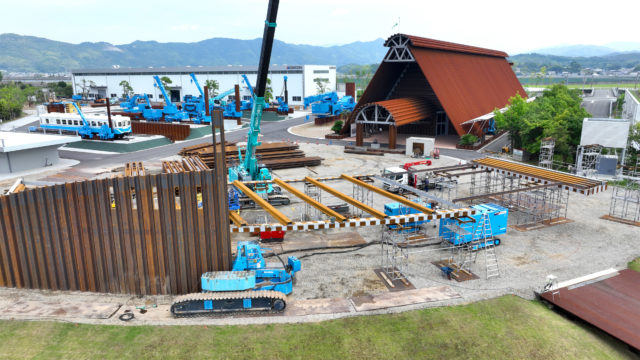
1. Press-in of steel sheet piles
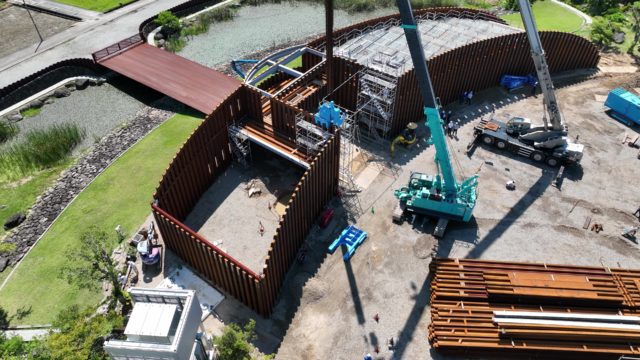
2. Upon completion of press-in work
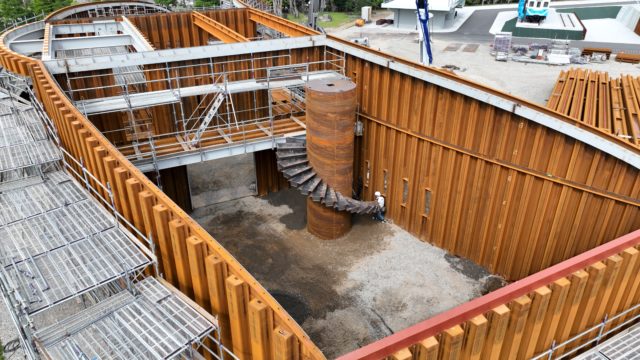
3. Installation of the tubular pile for the elevator and the spiral staircase
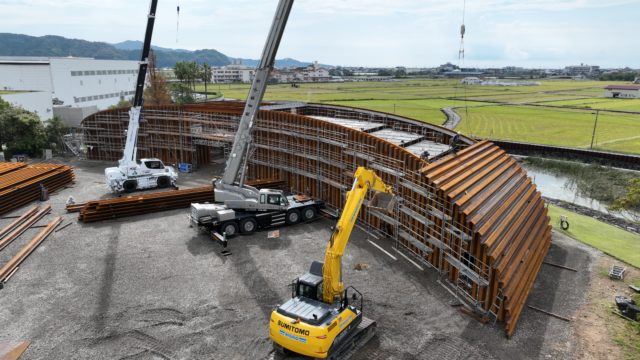
4. Installation of sheet piles for the roof
Overview of Construction
| Two-floor, above-ground steel-frame structure | |
| Building area | 846.78 ㎡ (Up to 28.4 m wide, 56.2 m long, and 8.1 m high) |
| Total floor area | 1,118.34 ㎡ |
| Certified by the minister of MLITT | Cert. No. MNNNNNN-11850-3 |
| The number of steel sheet piles used | |
| ・Vertical pressed-in section (zero sheet piles) | 282 piles (6–13.8 m) |
| ・Reception room wall (zero sheet piles) | 66 piles (0.5–5.6 m) |
| ・Second floor (zero sheet piles) | 61 piles (7.5–11.8 m) |
| ・Roof (zero sheet piles) | 104 piles (14.7–17.8 m) |
| ・Spiral staircase (zero sheet piles) | 19 piles (1.5 m) |
| ・Total weight | 501 tons |
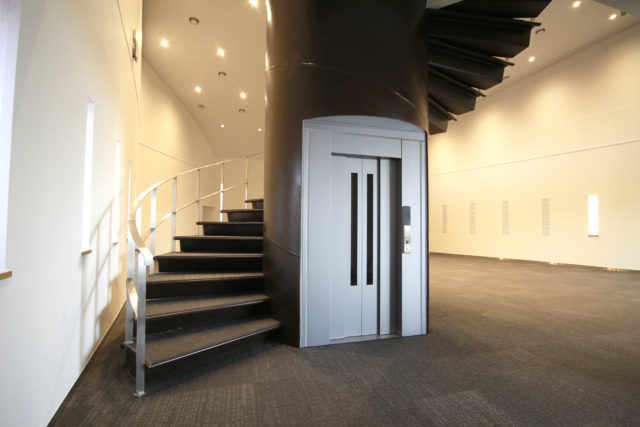
Elevator section
■Profile of GIKEN Group
GIKEN developed the SILENT PILERTM, the world's first reaction-based hydraulic pile jacking machine, installing piles with no noise and vibration. GIKEN Group now actively promotes the Press-in Technology worldwide and contributes to the construction industry by proposing and implementing innovative solutions. The innovative technology of press-in provides a unique solution and the adoption of this technology has grown to more than 40 nations and regions.
GIKEN LTD.
International Business Department
TEL: +81-3-3528-1633 (weekdays: 8:30 to 17:30)
Tokyo Head Office: 16F Ariake Central Tower, 3-7-18 Ariake, Koto-ku, 135-0063, Japan


